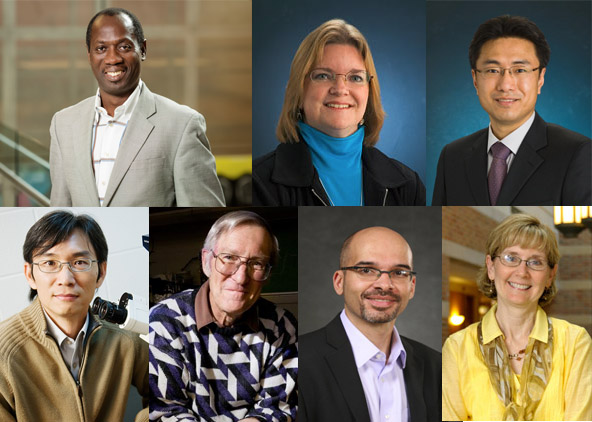By: Susan Jongeneel.
The Carl R. Woese Institute for Genomic Biology has formed a new research theme, Microbiome Metabolic Engineering (MME). Led by microbiologist and animal scientist Isaac Cann, the theme will focus on one of the grand challenges in biology today–how humans interact with their microbiomes and how these interactions affect human health and nutrition.
“The study of the microbiome has become a prominent challenge in biology and already has been embraced by several of our themes. MME is poised to engage in unique, exciting, and path breaking research in this area, with the potential for productive synergy across the IGB,” said Director Gene Robinson.

The research will integrate knowledge and experimental approaches from microbial physiology, microbial biochemistry, microbial ecology, enzymology, nutrition, animal model development, toxicology and environmental health, and systems biology to gain a better understanding of the microbiome’s role in health, develop new methods to assess host-microbe interactions, and examine how environmental toxicants affect human-microbiome interactions and the host.
The microbiome contains millions of genomes, each of which contains a large number of genes and proteins of unknown function and uncharacterized RNA. Cann said that while NIH has put a lot of money into research to determine what is in the gut microbiome, very little work has been done to gain a mechanistic understanding of how it develops and functions.
The team will work on identifying unique pathways in the human/microbiome milieu that impact human health and nutritional status. “We have to find out what all these bugs and all these genes are doing. Then our team is going to use information that is already out there and from our individual labs to do the mechanistic studies,” Cann said.
Most of the published work has looked at the adult microbiome. MME scientists will look at both adults and infants.
The human infant studies will involve collaboration with two ongoing prospective cohort studies: the STRONG (Synergistic Theory and Research on Obesity and Nutrition Group) Kids research study and the IKIDS (Illinois Kids Development Study) research study. The STRONG kids study is collecting maternal and infant stool samples, saliva, and breastmilk along with extensive metadata. The IKIDS study is collecting infant meconium and stool samples, cord blood samples, and extensive maternal and child health data.
“I'm really happy and excited that we get to work with them,” Cann said. “This area is not just microbiology or biochemistry. You need people who understand human nutrition.”
They will also develop devices as proxies for biological processes.
“One of the things that is very difficult to do is to be able to bring the gut outside because you can't really use the human for the sort of experiments that we want to do. So we want to be able to develop fermentation systems in the lab,” said Cann. “The lower gut for the microbes is basically a fermentation vat. It's a bioreactor.”
The researchers will initially direct most resources at growing the entire gut microbiome community without losing critical components. “You have to feed them in such a way that you maintain the entire community and if you do not do it right you are going to start losing some of the critical microbes that occupy a particular niche or that play a particular role,” Cann explained.
“We would be able to take a pathogen and spike the community and see how the community interacts with it; how they are able to overcome it, or how they succumb to it.”
Another question they want to address is the effect of environmental pollutants on humans. Microbes carry out biotransformations on foreign substances that enter the body–toxic substances can be made non-toxic, but the reverse is also true. The researchers will look at these processes in the gut and the lung to understand how environmental toxicants affect human/microbiome interactions, the impact on the host, and how to alleviate any harm they cause.
Cann sees the work of the theme as carrying on the work of the late Abigail Salyers, a former Arends Professor of Microbiology whom he described as “the person who really had a vision of the impact of the human microbiome and its effect on the entire human body.”
“It is a University of Illinois tradition and it is important that some of us devote some of our time to continue in the work that Abigail started many years ago,” he said.
Noting that different people have different gut microbial communities in their gut, he asked, “Is it possible for (us) to be able to determine the community that survives and protects you the best?”
Theme faculty members include Sharon Donovan of Food Science and Human Nutrition and Nutritional Sciences; Roderick Mackie of Animal Sciences and Nutritional Sciences; Wen-Tso Liu of Civil and Environmental Engineering; Susan Schantz of Veterinary Medicine; Jodi Flaws of Veterinary Medicine; Cari Vanderpool of Microbiology; Yong-Su Jin of Food Science and Human Nutrition and Nutritional Sciences; and Christopher Rao of Chemical and Biomolecular Engineering.
By: Susan Jongeneel.
Photos By: L. Brian Stauffer.



